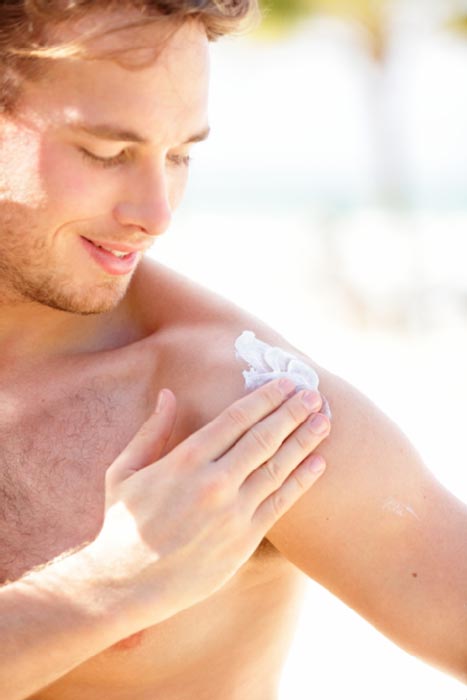What to Look For in a Sunscreen

The summer months are approaching, which means more time spent outside in the sun. Soaking up the sun may feel good, but it can be a disaster for your skin. Sun exposure leads to wrinkles, skin discoloration, and, most importantly, skin cancer. A good sunscreen can help you reduce the dangerous impacts of the sun on your skin, but with so many products on the market, how can you find the right one for you? Keep these tips in mind the next time you’re choosing a sunscreen.
SPF 30+
SPF stands for sun protection factor. It denotes a product’s ability to protect you from sun damage. For instance, if a product has an SPF of 30, it allows you to stay in the sun 30 times longer than you would be able to without sunscreen without getting burned. Most people should use an SPF of 30 when they plan to be out in the sun. If you have fair skin, consider using a product with an even higher SPF.
Chemical vs. Physical Sunscreen
Sunscreens can be classified into two major types: chemical and physical. Chemical sunscreens contain special ingredients that act as filters and reduce ultraviolet radiation penetration to the skin. Physical Sunscreens, most often referred to as sunblocks, are products containing ingredients such a titanium dioxide and zinc oxide which physically block ultraviolet radiation. If you have sensitive skin, Physical sunscreen should be your choice.
Water-Resistance
Applying sunscreen is one part of the battle. Getting it to stay on is another. Swimming, bathing, and sweating all-cause sunscreen to rinse away. If the sunscreen offers water resistance, you will see “40 minutes” or “80 minutes” after the words “water-resistant.” This tells you how long your skin can be wet or sweaty before you need to reapply. Sunscreen cannot be waterproof or sweatproof. You’ll no longer see these words on sunscreen labels.
Broad-Spectrum Protection
Your skin needs protection from both UVA and UVB rays. Look for a product that is labeled “broad spectrum.” In the past, some people avoided products that contain PABA, an ingredient that blocks UVB rays, because of skin irritation. However, PABA has been refined and is now safe for most skin types.
If you need help selecting a sunscreen, ask your dermatologist during your next appointment at Swinyer – Woseth Dermatology. Our Salt Lake City dermatologists’ office can help you understand how to protect your skin from the sun and offer treatments for existing sun damage, like chemical peels and skin cancer care. Make your appointment today by calling 801-266-8841.
